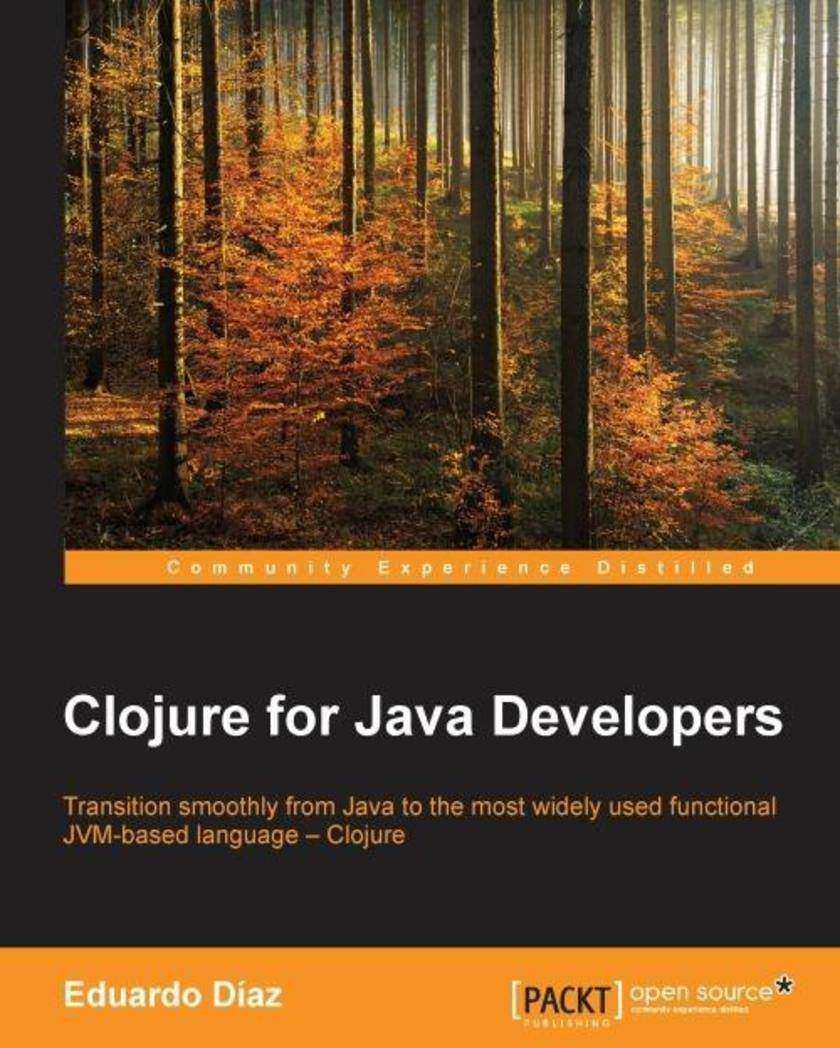
Clojure for Java Developers
¥63.21
Transition smoothly from Java to the most widely used functional JVM-based language – ClojureAbout This BookWrite apps for the multithreaded world with Clojure’s flavor of functional programmingDiscover Clojure’s features and advantages and use them in your existing projectsThe book is designed so that you’ll be able put to use your existing skills and software knowledge to become a more effective Clojure developerWho This Book Is ForThis book is intended for Java developers, who are looking for a way to expand their skills and understand new paradigms of programming. Whether you know a little bit about functional languages, or you are just getting started, this book will get you up and running with how to use your existing skills in Clojure and functional programming.What You Will LearnUnderstand the tools for the Clojure world and how they relate to Java tools and standards (like Maven)Learn about immutable data structures, and what makes them feasible for everyday programmingWrite simple multi-core programs using Clojure’s core concepts, like atoms, agents and refsUnderstand that in Clojure, code is data, and how to take advantage of that fact by generating and manipulating code with macrosLearn how Clojure interacts with Java, how the class loaders work and how to use Clojure from Java or the other way aroundDiscover a new, more flexible meaning of polymorphism and understand that OOP is not the only way to get itIn DetailWe have reached a point where machines are not getting much faster, software projects need to be delivered quickly, and high quality in software is more demanding as ever.We need to explore new ways of writing software that helps achieve those goals. Clojure offers a new possibility of writing high quality, multi-core software faster than ever, without having to leave your current platform.Clojure for Java developers aims at unleashing the true potential of the Clojure language to use it in your projects. The book begins with the installation and setup of the Clojure environment before moving on to explore the language in-depth. Get acquainted with its various features such as functional programming, concurrency, etc. with the help of example projects. Additionally, you will also, learn how the tooling works, and how it interacts with the Java environment.By the end of this book, you will have a firm grip on Clojure and its features, and use them effectively to write more robust programs.Style and approachAn easy to follow, step-by-step, guide on how to start writing Clojure programs making use of all of its varied features and advantages. As this is a new language, certain new concepts are supported with theoretical section followed by simple projects to help you gain a better understanding and practice of how Clojure works.
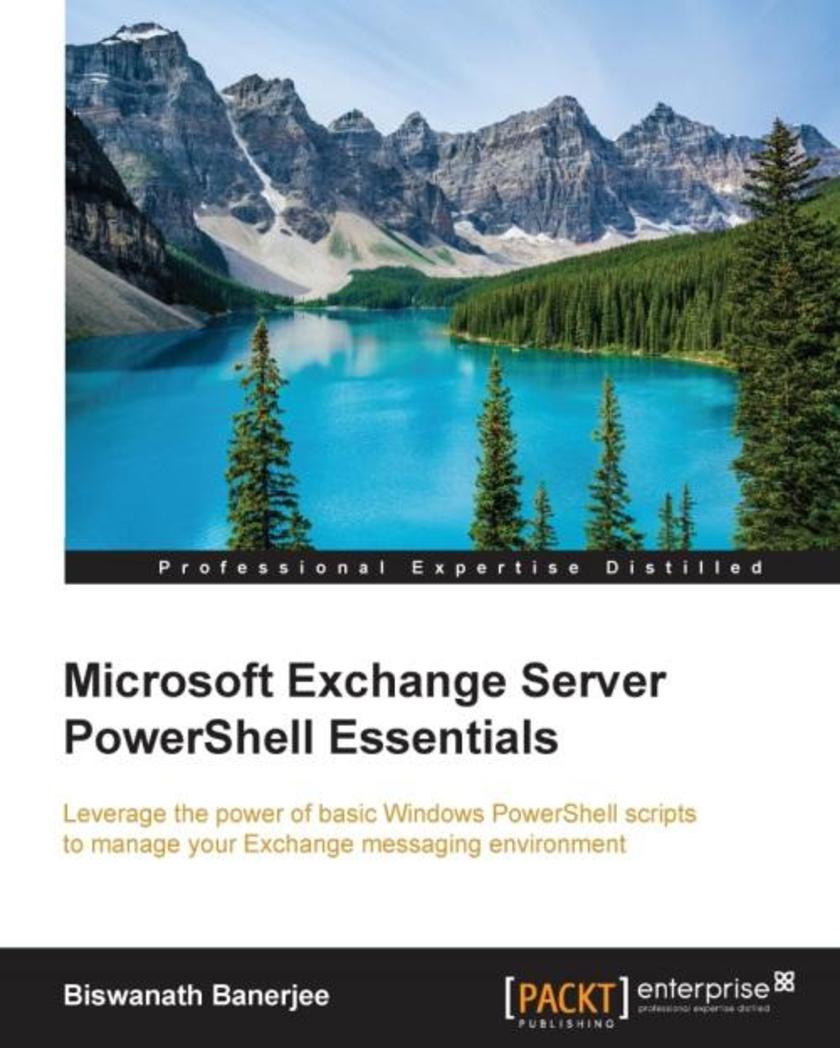
Microsoft Exchange Server PowerShell Essentials
¥63.21
Leverage the power of basic Windows PowerShell *s to manage your Exchange messaging environmentAbout This BookGet to grips with Windows PowerShell and how it can be used to manage various aspects of the operating system and applicationsBecome proficient in PowerShell and apply it to manage Exchange infrastructure on-premise or via Exchange Online as part of Office 365Learn to create Windows PowerShell *s to do administrative tasks with this step-by-step, easy-to-follow guideWho This Book Is ForThis book is for administrators with a basic or limited understanding of Windows PowerShell and who want to increase their skill set in managing both the Exchange On Premise and Online environments.What You Will LearnDeep dive into the Windows PowerShell basicsCreate and manage Recipients and permissionsManage Distribution Group members, permissions, and group typesUnderstand Certificates and Role-Based Access Control using real-world examplesReview the usage of email address, address book, and retention policies with examplesLearn to manage Exchange Client Access and Mailbox Server rolesUse PowerShell for auditing and risk management in your Exchange organizationManage a highly available Exchange environment using PowerShellInteract with Exchange through the use of the Exchange Web Services-managed APIIn DetailPowerShell has become one of the most important skills in an Exchange administrator's armory. PowerShell has proved its mettle so widely that, if you're not already starting to learn PowerShell, then you're falling behind the industry. It isn't difficult to learn PowerShell at all. In fact, if you've ever run commands from a CMD prompt, then you'll be able to start using PowerShell straightaway.This book will walk you through the essentials of PowerShell in Microsoft Exchange Server and make sure you understand its nitty gritty effectively.You will first walk through the core concepts of PowerShell and their applications. This book discusses ways to automate tasks and activities that are performed by Exchange administrators and that otherwise take a lot of manual effort.Microsoft Exchange PowerShell Essentials will provide all the required details for Active Directory, System, and Exchange administrators to help them understand Windows PowerShell and build the required *s to manage the Exchange Infrastructure.Style and approachThis book is written with its target audience in mind; concepts are explained and followed by real-life examples. A comprehensive * is provided in each chapter to give you hands-on practice with all the major commands used in it.
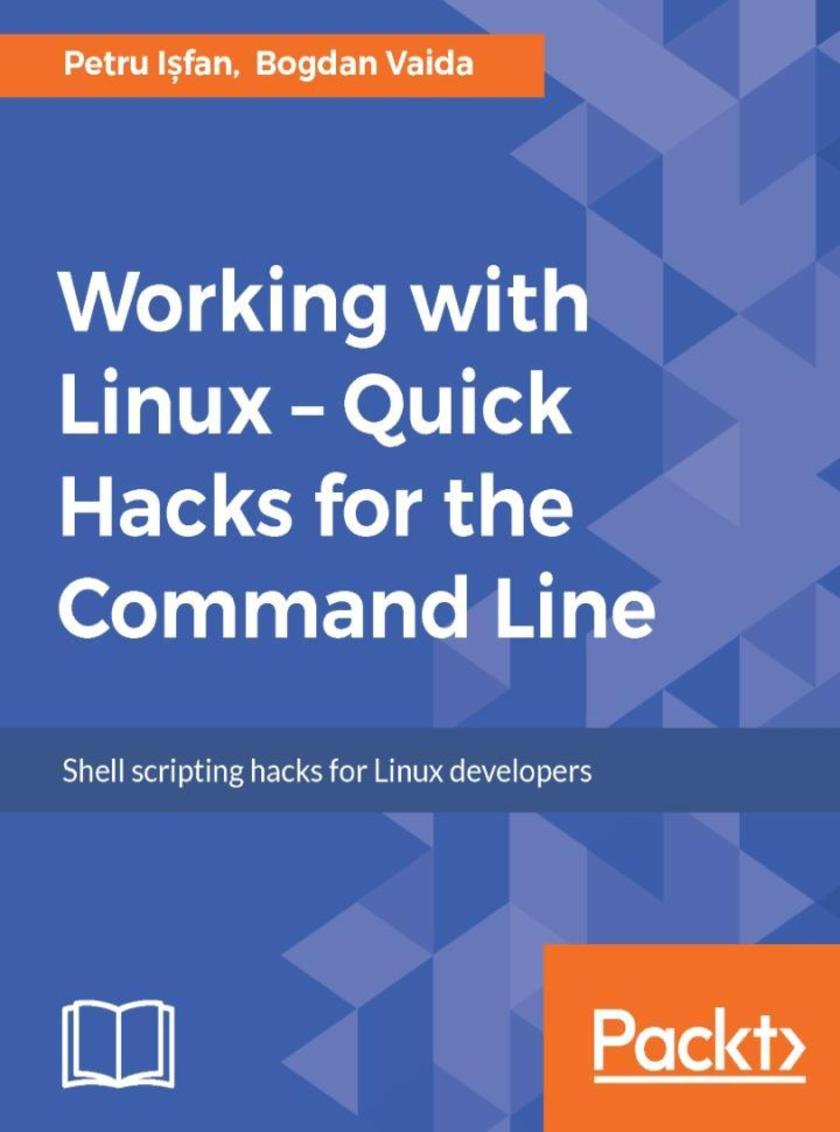
Working with Linux – Quick Hacks for the Command Line
¥71.93
Say goodbye to unproductive Linux habits and switch to the express lane About This Book ? Improve your terminal and command-line productivity by using powerful tools ? Sharpen your existing command-line skills and achieve complex tasks faster ? Save time and money by creating customized commands that automate day-to-day tasks Who This Book Is For This book is for system administrators and developers who know the basics of Linux and want to brush up and sharpen their skills. Prior experience with Linux shell is required. What You Will Learn ? Optimize the power of Guake by integrating it with ClipIt ? Deep dive into the workings of the console editor—Vim ? Explore the advanced concepts and best practices of shell *ing ? Edit large amounts of data quickly using Sed ? Use pipes and subshells to create customized commands ? Get to know how you can speed up the software development and make the terminal a handy companion In Detail Websites, online services, databases, and pretty much every other computer that offers public services runs on Linux. From small servers to clusters, Linux is anywhere and everywhere. With such a broad usage, the demand for Linux specialists is ever growing. For the engineers out there, this means being able to develop, interconnect, and maintain Linux environments. This book will help you increase your terminal productivity by using Terminator, Guake and other tools. It will start by installing Ubuntu and will explore tools and techniques that will help you to achieve more work with less effort. Next, it will then focus on Terminator, the ultimate terminal, and vim, one of the most intelligent console editors. Futhermore, the readers will see how they can increase their command line productivity by using sed, find, tmux, network, autoenv. The readers will also see how they can edit files without leaving the terminal and use the screen space efficiently and copy-paste like a pro. Towards the end, we focus on network settings, Git hacks, and creating portable environments for development and production using Docker. Through this book, you will improve your terminal productivity by seeing how to use different tools. Style and Approach This book takes a step-by-step approach using examples that show you how to automate tasks using terminal commands. You’ll work through easy-to-follow instructions so you learn to use the various Linux commands and tools such as Terminator, Guake, and others.
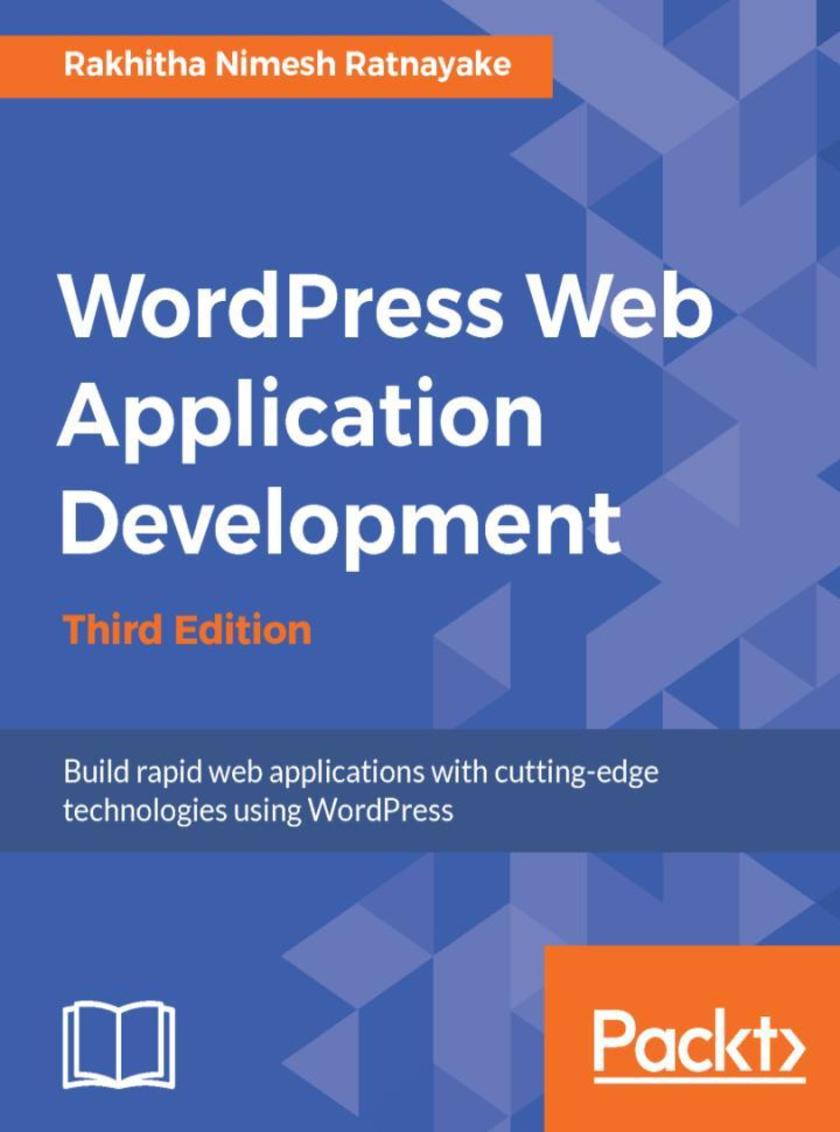
Wordpress Web Application Development - Third Edition
¥90.46
Learn in easy stages how to rapidly build leading-edge web applications from scratch. About This Book ? Develop powerful web applications rapidly with WordPress ? Explore the significant features and improvements introduced in WordPress 4.7 by learning the numerous tips and techniques in this book. ? Unleash the power of REST API endpoints to make your interaction with websites new and innovative. Who This Book Is For This book is targeted at WordPress developers and designers who want to develop quality web applications within a limited time frame and maximize their profits. A prior knowledge of basic web development and design is assumed. What You Will Learn ? Develop extendable plugins with the use of WordPress features in core modules ? Develop pluggable modules to extend the core features of WordPress as independent modules ? Manage permissions for a wide range of content types in web applications based on different user types ? Follow WordPress coding standards to develop reusable and maintainable code ? Build and customize themes beyond conventional web layouts ? Explore the power of core database tables and understand the limitations when designing database tables for large applications ? Integrate open source modules into WordPress applications to keep up with the latest open source technologies ? Customize the WordPress admin section and themes to create the look and feel of a typical web application In Detail WordPress is one of the most rapidly expanding markets on the Web. Learning how to build complex and scalable web applications will give you the ability and knowledge to step into the future of WordPress. WordPress 4.7 introduces some exciting new improvements and several bug fixes, which further improve the entire development process.This book is a practical, scenario-based guide to expanding the power of the WordPress core modules to develop modular and maintainable real-world applications from scratch. This book consistently emphasizes adapting WordPress features into web applications. It will walk you through the advanced usages of existing features such as access controlling; database handling; custom post types; pluggable plugins; content restrictions; routing; translation; caching; and many more, while you build the backend of a forum management application. This book begins by explaining how to plan the development of a web application using WordPress' core features. Once the core features are explained, you will learn how to build an application by extending them through custom plugin development. Finally, you will explore advanced non-functional features and application integration. After reading this book, you will have the ability to develop powerful web applications rapidly within limited time frames. Style and approach An extensive, practical guide that explains how to adapt WordPress features, both conventional and trending, for web applications.
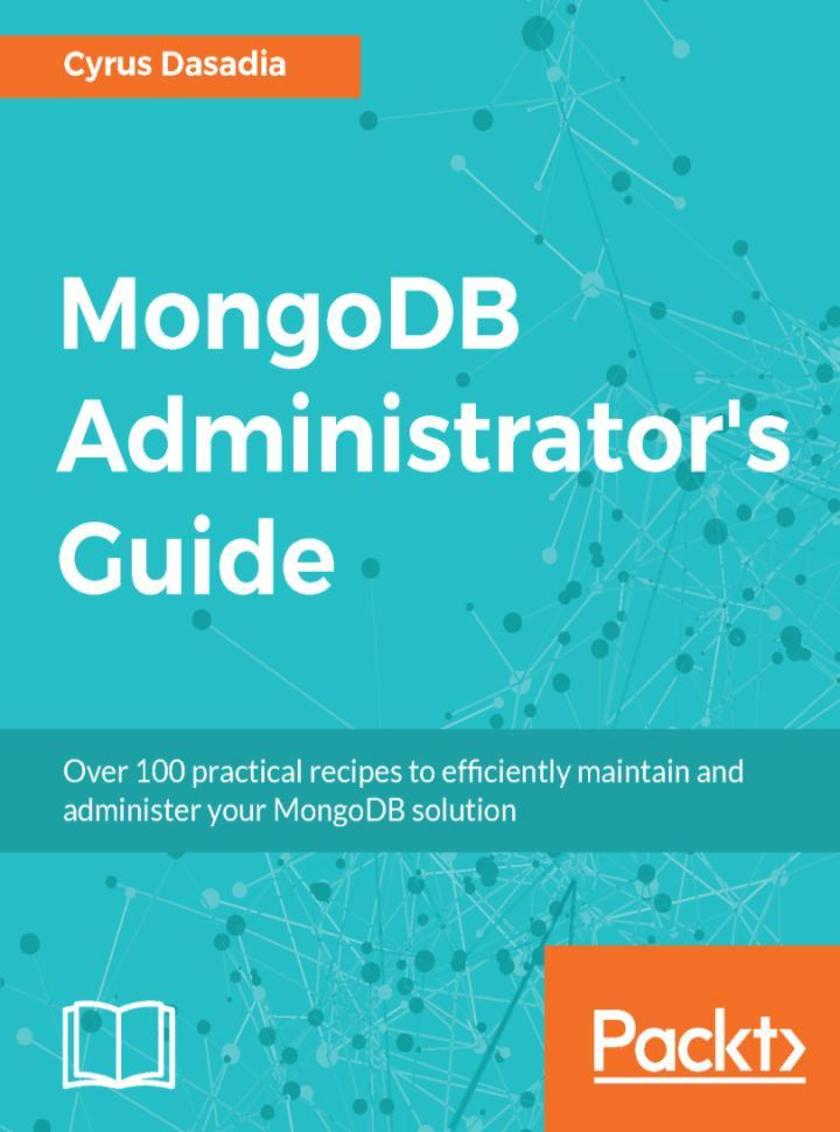
MongoDB Administrator’s Guide
¥71.93
Manage, fine-tune, secure and deploy your MongoDB solution with ease with the help of practical recipes About This Book ? Configure and deploy your MongoDB instance securely, without any hassle ? Optimize your database's query performance, perform scale-out operations, and make your database highly available ? Practical guide with a recipe-based approach to help you tackle any problem in the application and database administration aspects of MongoDB Who This Book Is For Database administrators with a basic understanding of the features of MongoDB and who want to professionally configure, deploy, and administer a MongoDB database, will find this book essential. If you are a MongoDB developer and want to get into MongoDB administration, this book will also help you. What You Will Learn ? Install and deploy MongoDB in production ? Manage and implement optimal indexes ? Optimize monitoring in MongoDB ? Fine-tune the performance of your queries ? Debug and diagnose your database's performance ? Optimize database backups and recovery and ensure high availability ? Make your MongoDB instance scalable ? Implement security and user authentication features in MongoDB ? Master optimal cloud deployment strategies In Detail MongoDB is a high-performance and feature-rich NoSQL database that forms the backbone of the systems that power many different organizations. Packed with many features that have become essential for many different types of software professional and incredibly easy to use, this cookbook contains more than 100 recipes to address the everyday challenges of working with MongoDB. Starting with database configuration, you will understand the indexing aspects of MongoDB. The book also includes practical recipes on how you can optimize your database query performance, perform diagnostics, and query debugging. You will also learn how to implement the core administration tasks required for high-availability and scalability, achieved through replica sets and sharding, respectively. You will also implement server security concepts such as authentication, user management, role-based access models, and TLS configuration. You will also learn how to back up and recover your database efficiently and monitor server performance. By the end of this book, you will have all the information you need—along with tips, tricks, and best practices—to implement a high-performance MongoDB solution. Style and approach This practical book follows a problem-solution approach to help you tackle any issues encountered while performing MongoDB administrative tasks. Each recipe is detailed, and explained in a very easy to understand manner
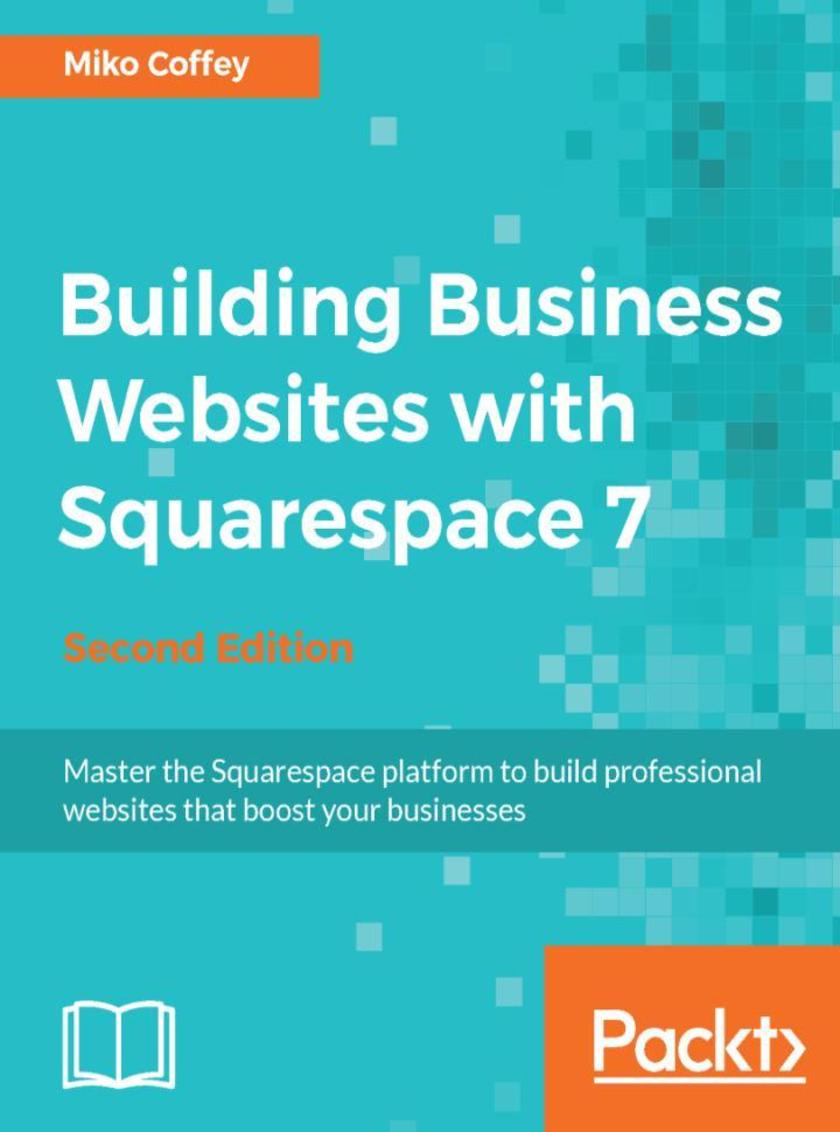
Building Business Websites with Squarespace 7 - Second Edition
¥80.65
Discover the best way to build, design and launch professional websites with Squarespace quickly, without needing to learn any code About This Book ? Discover time-saving tricks and best practices, and avoid common pitfalls while creating a website ? Create visually stunning Responsive Design templates for your website with Squarespace 7 ? Understand how to monitor, measure, and manage your website after launching it Who This Book Is For This book is ideal for anyone who wants to learn how to use the latest version of Squarespace to create a website from scratch and take it through to go-live. You don't need any prior experience with Squarespace, HTML, or CSS, or building websites in general as everything is done using Squarespace's simple, browser-based interface. What You Will Learn ? Develop an essential Website Toolkit that will act as reference and materials for your entire project, ensuring you stay on-target to meet your objectives ? Set up your Squarespace account, learn how the interface works, and select the correct template for your website's purpose and goals ? Create your website framework, fill it with content, and arrange your pages using Squarespace's easy drag-and-drop tools ? Customize your site's look and feel to match your brand, and create a stunning visual impact for your website on all types of devices, including mobiles and tablets ? Configure the core functions your business needs, whether connecting to social media, promoting events, showcasing your work, or selling goods and services online ? Learn time-saving tricks and how to avoid common pitfalls from an experienced professional with years of Squarespace experience ? Gain valuable insights about search engine optimization, communicating effectively online, and other e-marketing advice ? How to monitor, measure, and manage your website post-launch In Detail Squarespace is a web-based tool that allows non-technical people to create and manage professional-looking websites quickly, without needing to write any code. It empowers business owners to take total control of their own websites, without needing to pay someone to design or maintain it. This book covers much more than just how to use Squarespace. It covers all aspects of creating a successful business website, from developing your brand identity, to writing and structuring content to match your target audience's needs, and dozens of other other valuable tips that will help your website shine. Most importantly, you'll learn the correct steps to follow in order to ensure your project is smooth and stress-free. The book starts by helping you plan your website project and gather all the raw materials you'll need. Next, you'll set up your account and become familiar with the terminology and tools that you'll be using. Once you've learned the basics of how the Squarespace interface, templates, and different page types operate, you will create the framework of your website, ready for you to insert content and functionality. Then, once all the core elements are in place, you'll apply the aesthetic fine-tuning needed to bring your website in line with your brand. After the aesthetics have been honed and all functions tested, you will launch your website and drive traffic to it, monitor it, and improve it. Style and approach This easy-to-follow guide will teach you to build websites the easiest way in the latest version of Squarespace.
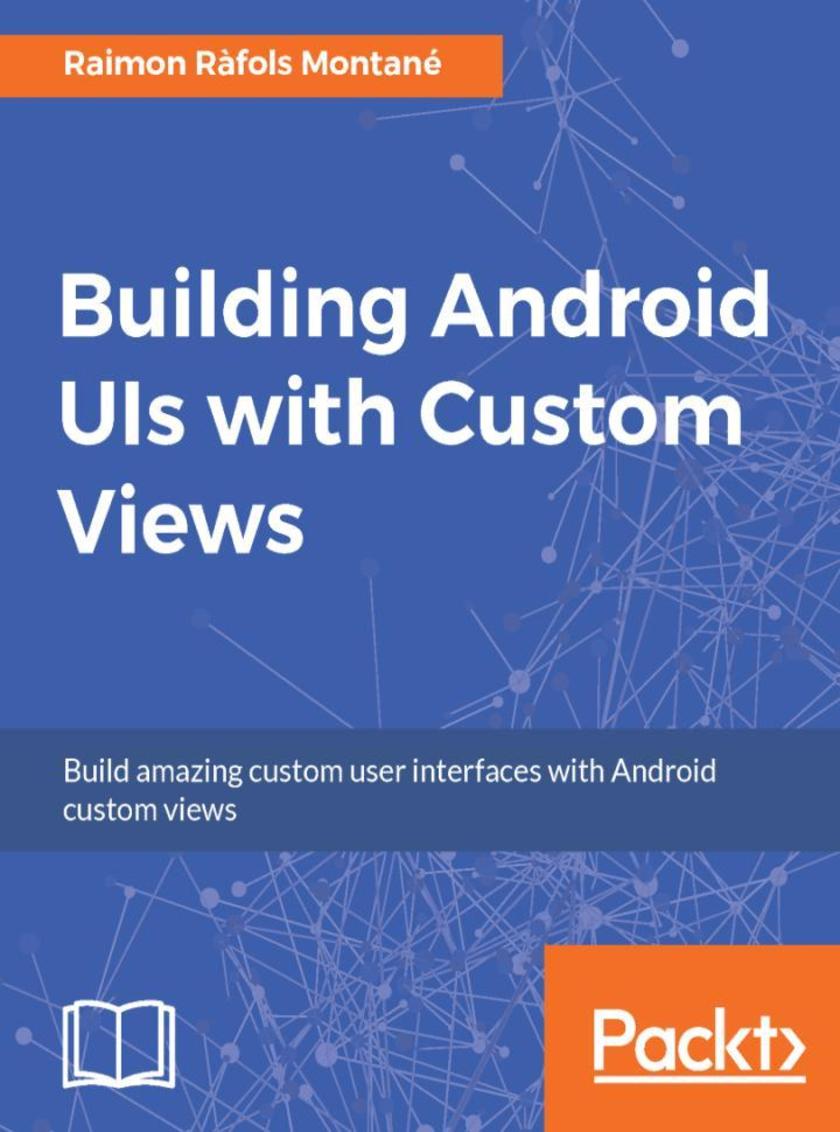
Building Android UIs with Custom Views
¥80.65
Create engaging user experiences and awesome user interfaces using this guide About This Book ? Move beyond default UI templates, create and customize amazing UIs with Android Custom View ? Enable smooth data flow and create futuristic UIs by creating flexible custom views ? Scale your apps with responsive and data intensive views Who This Book Is For This book is for Android developers who want to create great user interfaces and move beyond the basics of the standard UI elements. They must have basic Android development knowledge along with basic Java programming. What You Will Learn ? Extend the standard UI widget framework by creating Custom views ? Add complex rendering, animations, and interactions to your views ? Optimize performance and decrease battery usage ? Implement custom views to share between multiple projects, or share it publicly ? Create 3D custom views using OpenGL ES In Detail To build great user interfaces for your Android apps that go beyond the standard UI elements, you need to use custom Android views. With these, you can give your app a distinctive look and ensure that it functions properly across multiple devices. This book will help you construct a great UI for your apps by teaching you how to create custom Android views. You will start by creating your first Android custom view and go through the design considerations. You will then see how the right choices will enable your custom view to perform seamlessly across multiple platforms and Android versions. You will create custom styleable attributes that work with Android XML layouts, learn to process touch events, define custom attributes, and add properties and events to them. By the end of this book, you will be able to create apps with custom views that are responsive and adaptable to make your app distinctive and an instant hit with its users. Style and approach The approach will be that of a step by step practical tutorial. The book will take you through a complete journey, right from creating your first Android view to customizing it to enable it to support any complex app.
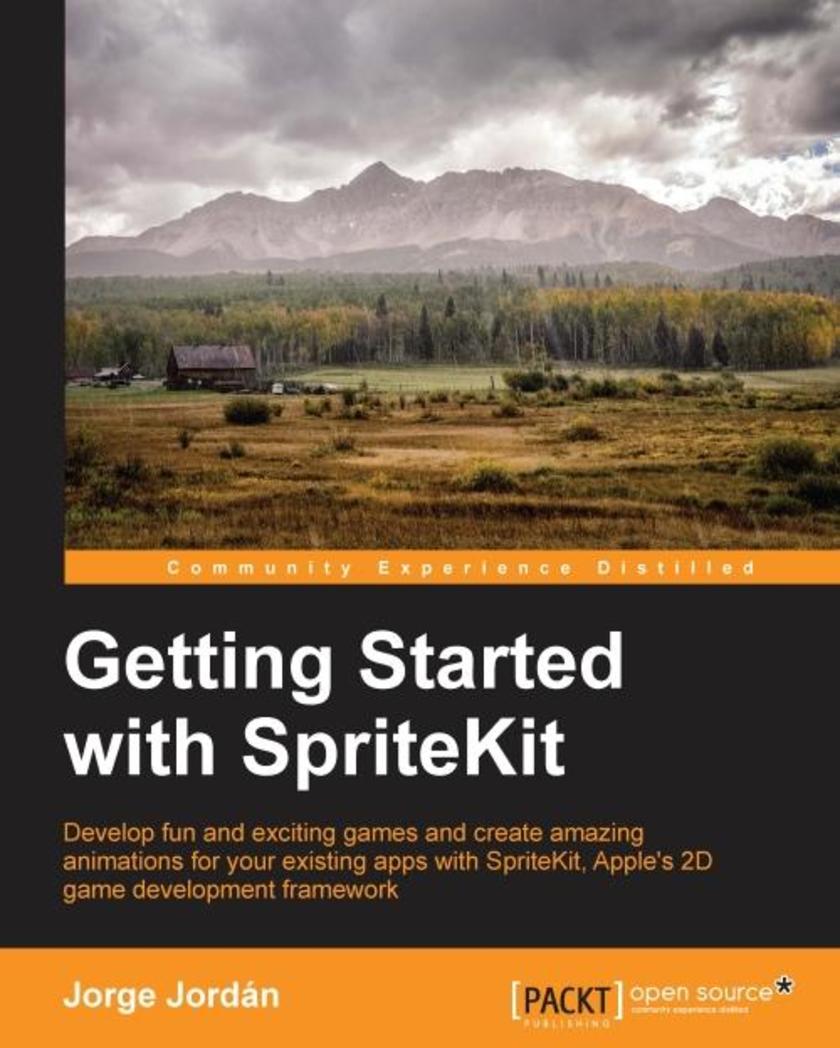
Getting Started with SpriteKit
¥71.93
Develop fun and exciting games and create amazing animations for your existing apps with SpriteKit, Apple's 2D game development frameworkAbout This BookLearn the key concepts of game development in iOSTake advantage of SpriteKit to create your own games and improve your appsFollow the step-by-step chapters to create a complete product ready to submit to the App StoreWho This Book Is ForGetting Started with SpriteKit is for beginner-level iOS developers who want to add an extra edge to their apps and create amazing games using SpriteKit. It doesn’t matter whether you have experience in iOS development or not as this book will show you the swift tricks you can use to create games.What You Will LearnCreate and configure a SpriteKit project from scratchLoad and manage the basic elements of games such as sprites, labels, and geometrical primitivesHandle touch events, detect collisions, and play sound audio filesCreate complex elements, animate sprites, and run the parallax effectComplete your games with key components such as a main menu, transitions between scenes, a tutorial, and the ability to load and save dataIncrease the efficiency of your device using the accelerometer or by adding shaders, lights, and shadowsGain complementary techniques such as creating or finding audio resources, applying SpriteKit to apps, or using third-party toolsIn DetailSpriteKit is Apple’s game engine to develop native iOS games. Strongly boosted by the Apple Inc., Cupertino, it has increased in popularity since its first release. This book shows you the solutions provided by SpriteKit to help you create any 2D game you can imagine and apply them to create animations that will highlight your existing apps.This book will give you the knowledge you need to apply SpriteKit to your existing apps or create your own games from scratch.Throughout the book, you will develop a complete game. The beautiful designs implemented in the game in this book will easily lead you to learn the basis of 2D game development, including creating and moving sprites, and adding them to a game scene. You will also discover how to apply advanced techniques such as collision detection, action execution, playing music, or running animations to give a more professional aspect to the game. You will finish your first game by learning how to add a main menu and a tutorial, as well as saving and loading data from and to the player’s device.Finally, you will find out how to apply some mobile games techniques such as accelerometer use or touch detection.Style and approachWritten in an informal way with plenty of illustrative screenshots, this easy-to-follow and practical guide will help you get the most from SpriteKit. The main part of the book provides step-by-step instructions to develop of a complete product, while the last chapters give you some complementary techniques than can be used in mobile 2D game development.
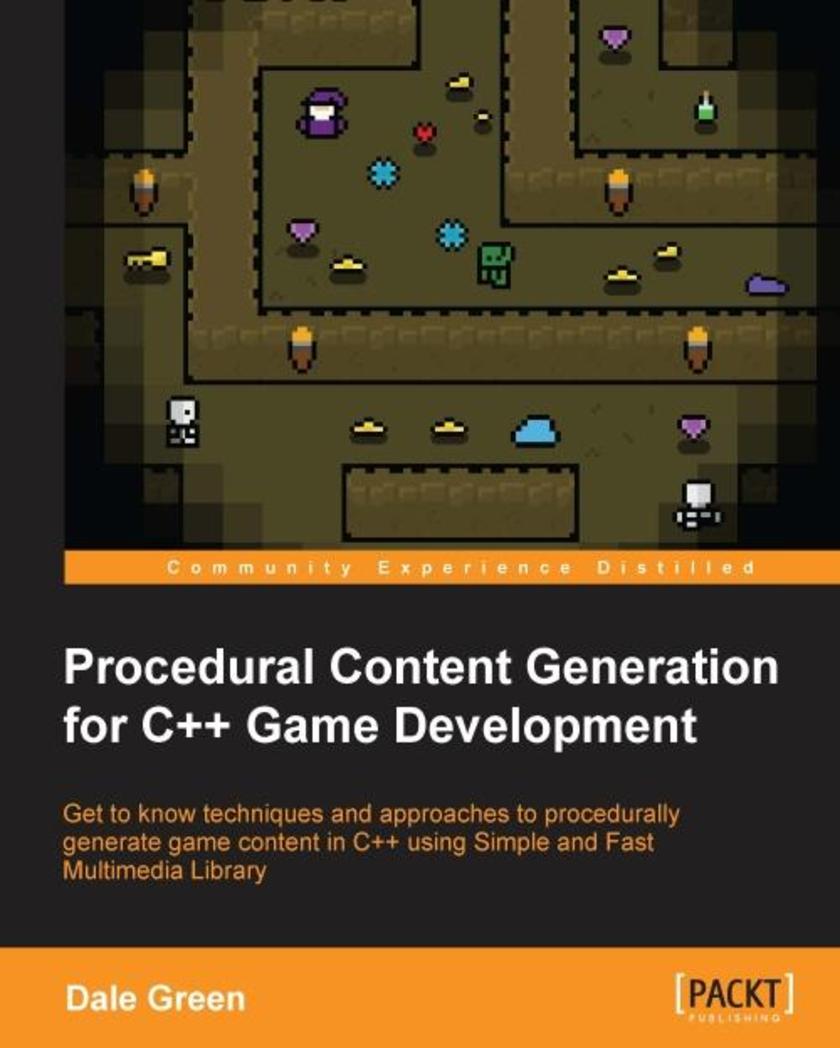
Procedural Content Generation for C++ Game Development
¥90.46
Get to know techniques and approaches to procedurally generate game content in C++ using Simple and Fast Multimedia LibraryAbout This BookThis book contains a bespoke Simple and Fast Multimedia Library (SFML) game engine with complete online documentationThrough this book, you’ll create games that are non-predictable and dynamic and have a high replayability factorGet a breakdown of the key techniques and approaches applied to a real game.Who This Book Is ForIf you are a game developer who is familiar with C++ and is looking to create bigger and more dynamic games, then this book is for you. The book assumes some prior experience with C++, but any intermediate concepts are clarified in detail. No prior experience with SFML is required.What You Will LearnDiscover the systems and ideology that lie at the heart of procedural systemsUse Random number generation (RNG) with C++ data types to create random but controlled resultsBuild levels procedurally with randomly located items and eventsCreate dynamic game objects at runtimeConstruct games using a component-based approachAssemble non-predictable game events and scenariosOperate procedural generation to create dynamic content fast and easilyGenerate game environments for endless replayabilityIn DetailProcedural generation is a growing trend in game development. It allows developers to create games that are bigger and more dynamic, giving the games a higher level of replayability. Procedural generation isn’t just one technique, it’s a collection of techniques and approaches that are used together to create dynamic systems and objects. C++ is the industry-standard programming language to write computer games. It’s at the heart of most engines, and is incredibly powerful. SFML is an easy-to-use, cross-platform, and open-source multimedia library. Access to computer hardware is broken into succinct modules, making it a great choice if you want to develop cross-platform games with ease.Using C++ and SFML technologies, this book will guide you through the techniques and approaches used to generate content procedurally within game development.Throughout the course of this book, we’ll look at examples of these technologies, starting with setting up a roguelike project using the C++ template. We’ll then move on to using RNG with C++ data types and randomly scattering objects within a game map. We will create simple console examples to implement in a real game by creating unique and randomised game items, dynamic sprites, and effects, and procedurally generating game events. Then we will walk you through generating random game maps. At the end, we will have a retrospective look at the project.By the end of the book, not only will you have a solid understanding of procedural generation, but you’ll also have a working roguelike game that you will have extended using the examples provided.Style and approachThis is an easy-to-follow guide where each topic is explained clearly and thoroughly through the use of a bespoke example, then implemented in a real game project.
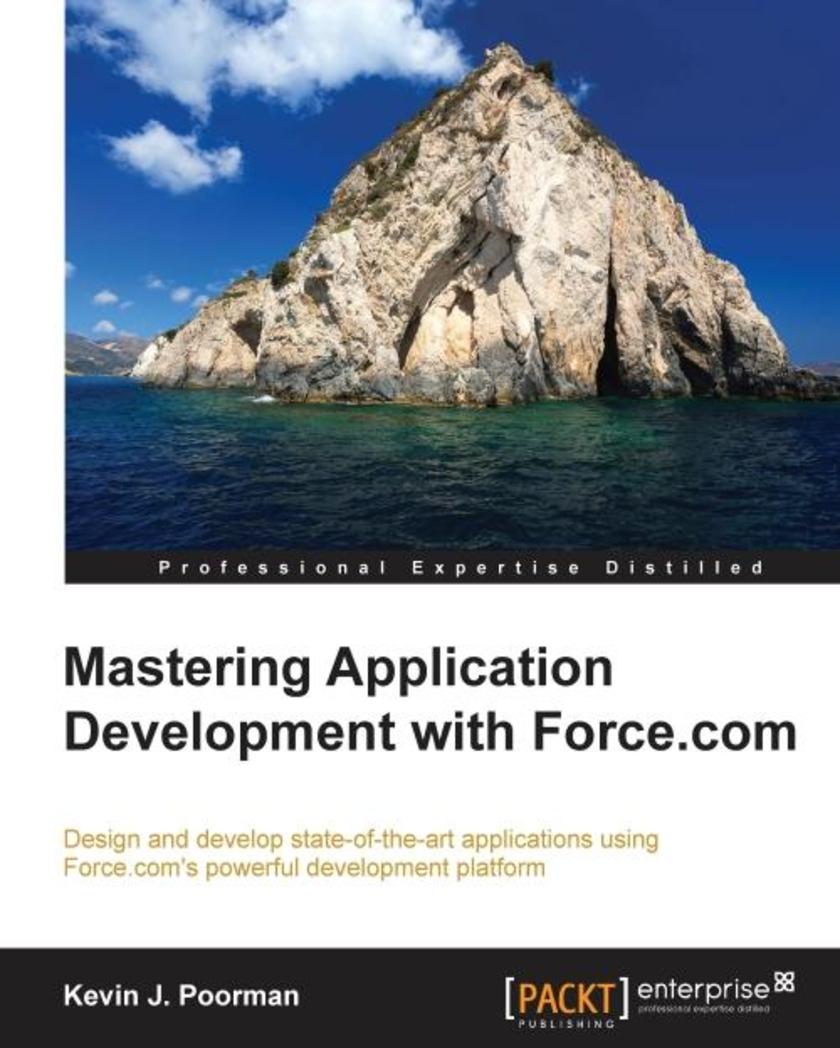
Mastering Application Development with Force.com
¥63.21
Design and develop state-of-the-art applications using Force.com's powerful development platformAbout This BookFlaunt your skillsets by developing complex applications that include demanding concepts such as triggers, Visualforce controllers, batch jobs, and Lightning componentsEarn the gratitude of your colleagues by structuring a project so that multiple developers can work independently of each otherKevin Poorman, the author of the book and a Force.com MVP, shares his years of Force.com knowledge and experience with you through the medium of telling examplesWho This Book Is ForIf you're a Force.com developer with a fundamental understanding of Apex and JavaScript but now want to enhance your skills with tips, tricks, and guidance on the best architectural and engineering practices, then this book is for you.What You Will LearnCreating triggers, and the best practices for writing themDeveloping a number of Visualforce controllers and extensionsIntegrating third-party web APIs into your Apex codeWriting unit tests that cover testing bulk safety, user and profile settings, and negative testsCreating a Lightning component for use in Salesforce1Getting acquainted with various methods for deploying metadata between orgsUsing the Rest sObject API for access to Salesforce objects and data using the REST methodologyLearning about overarching architectural considerations such as naming conventions, testing practices, and data modeling practicesIn DetailForce.com is an extremely powerful, scalable, and secure cloud platform, delivering a complete technology stack, ranging from databases and security to workflow and the user interface. With salesforce.com's Force.com cloud platform, you can build any business application and run it on your servers.The book will help you enhance your skillset and develop complex applications using Force.com. It gets you started with a quick refresher of Force.com's development tools and methodologies, and moves to an in-depth discussion of triggers, bulkification, DML order of operations, and trigger frameworks. Next, you will learn to use batchable and schedulable interfaces to process massive amounts of information asynchronously. You will also be introduced to Salesforce Lightning and cover components—including backend (apex) controllers, frontend (JavaScript) controllers, events, and attributes—in detail.Moving on, the book will focus on testing various apex components: what to test, when to write the tests, and—most importantly—how to test. Next, you will develop a changeset and use it to migrate your code from one org to another, and learn what other tools are out there for deploying metadata. You will also use command-line tools to authenticate and access the Force.com Rest sObject API and the Bulk sObject API; additionally, you will write a custom Rest endpoint, and learn how to structure a project so that multiple developers can work independently of each other without causing metadata conflicts.Finally, you will take an in-depth look at the overarching best practices for architecture (structure) and engineering (code) applications on the Force.com platform.Style and approach A step-by-step tutorial, with plenty of tips and tricks that will help you develop complex Force.com applications.
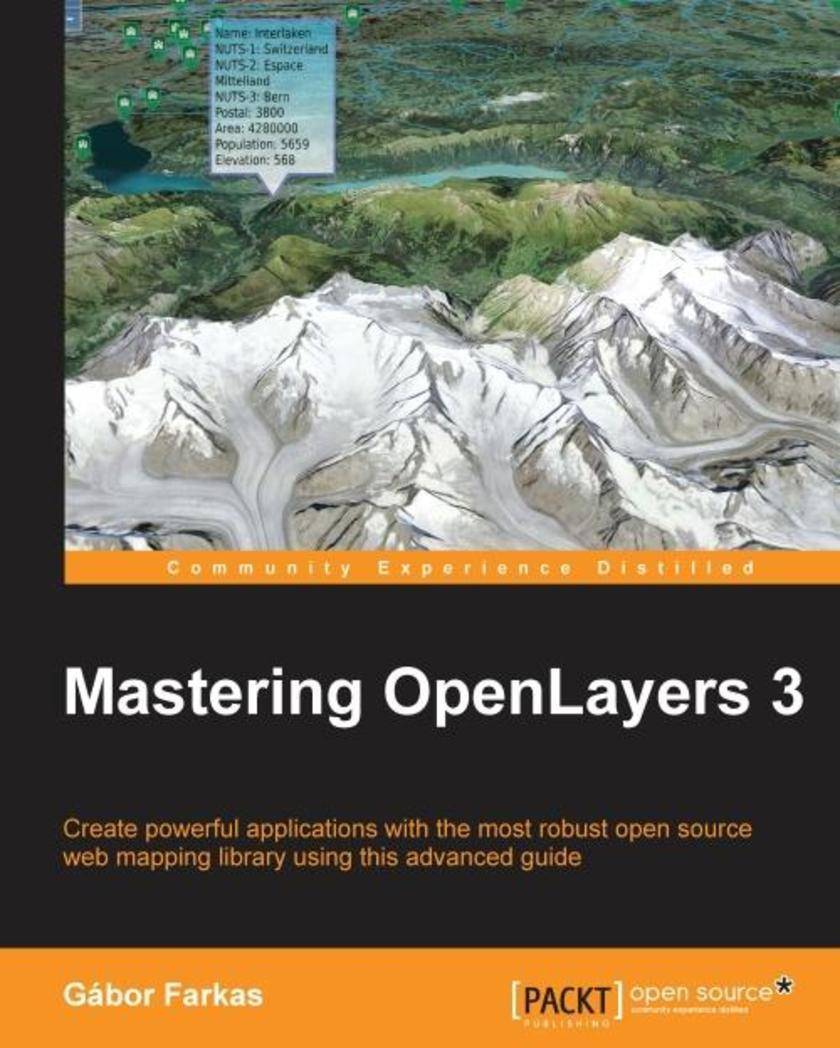
Mastering OpenLayers 3
¥90.46
Create powerful applications with the most robust open source web mapping library using this advanced guideAbout This BookDevelop responsive and platform-independent web mapping applications with OpenLayers 3Learn the key points of creating great applications with native JavaScript through the step-by-step examplesMaster the use of the library, from compiling custom builds to developing a complete WebGIS applicationWho This Book Is ForThis book is intended for front-end developers with basic understanding of JavaScript and GIS concepts, and preferably for those who are familiar with the fundamentals of OpenLayers 3. You might have never used OpenLayers 3 as a seasoned JavaScript developer. If this is the case and you are eager to learn web mapping, this book will definitely set you on the right track.What You Will LearnUse the advanced functionality of the OpenLayers 3 library effectivelyImplement the library in your application, shaping it to your needsManage layers and the layer stack dynamicallyCreate not only stunning but also accurate thematic mapsExtend OpenLayers 3 with your own custom classesDevelop mobile-friendly web mapping applicationsMake stunning effects with canvas manipulation, or visualize point clouds with WebGLIntegrate third-party applications, and create custom builds that completely satisfy your needsIn DetailOpenLayers 3 allows you to create stunning web mapping and WebGIS applications. It uses modern, cutting edge browser technologies. It is written with Closure Library, enabling you to build browser-independent applications without painful debugging ceremonies, which even have some limited fallback options for older browsers.With this guide, you will be introduced to the world of advanced web mapping and WebGIS.First, you will be introduced to the advanced features and functionalities available in OpenLayers 3. Next, you will be taken through the key points of creating custom applications with OpenLayers 3. You will then learn how to create the web mapping application of yours (or your company's) dream with this open source, expense-free, yet very powerful library. We’ll also show you how to make amazing looking thematic maps and create great effects with canvas manipulation.By the end of this book, you will have a strong command of web mapping and will be well on your way to creating amazing applications using OpenLayers 3.Style and approachThis is an advanced guide packed with comprehensive examples, and it concentrates on the advanced parts of OpenLayers 3 and JavaScript. It intentionally skips the basic and well-known methodologies, but discusses the hard-to-understand ones in great detail.
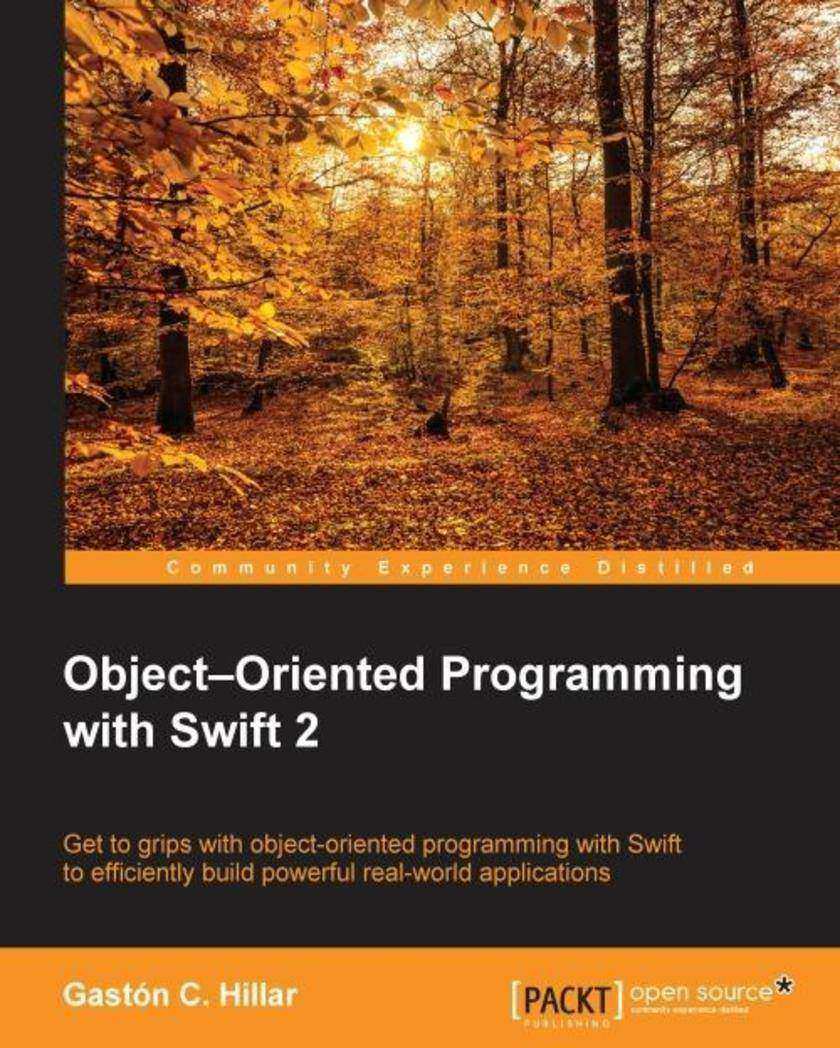
Object–Oriented Programming with Swift 2
¥80.65
Get to grips with object-oriented programming in Swift to efficiently build powerful real-world applicationsAbout This BookLeverage the most efficient object-oriented design patterns in your Swift applicationsWrite robust, safer, and better code using the blueprints that generate objectsBuild a platform with object-oriented code by using real-world elements and represent them in your appWho This Book Is ForIf you are an iOS developer who has a basic idea of object-oriented programming and want to incorporate its concepts with Swift to optimize your application's code and create reusable and easily to understand building blocks, then this book is for you. This is a very useful resource for developers who want to shift from Objective C, C#, Java, Python, JavaScript, or other object-oriented languages to SwiftWhat You Will LearnBuild solid, stable, and reliable applications using SwiftWork with encapsulation, abstraction, and polymorphism using Swift 2.0Customize constructors and destructors based on your needsDevelop Swift 2.0 with classes, instances, properties, and methodsTake advantage of generic code to maximize code reuse and generalize behaviorsUse state of inheritance, specialization, and the possibility to overload membersWrite high quality object-oriented code to build apps for iOS or Mac OS XIn DetailObject-Oriented Programming (OOP) is a programming paradigm based on the concept of objects; these are data structures that contain data in the form of fields, often known as attributes and code. Objects are everywhere, and so it is very important to recognize elements, known as objects, from real-world situations and know how they can easily be translated into object-oriented code.Object-Oriented Programming with Swift is an easy-to-follow guide packed full of hands-on examples of solutions to common problems encountered with object-oriented code in Swift. It starts by helping you to recognize objects using real-life scenarios and demonstrates how working with them makes it simpler to write code that is easy to understand and reuse.You will learn to protect and hide data with the data encapsulation features of Swift. Then, you will explore how to maximize code reuse by writing code capable of working with objects of different types. After that, you'll discover the power of parametric polymorphism and will combine generic code with inheritance and multiple inheritance. Later, you move on to refactoring your existing code and organizing your source for easy maintenance and extensions.By the end of the book, you will be able to create better, stronger, and more reusable code, which will help you build better applications.Style and approachThis simple guide is packed with practical examples of solutions to common problems. Each chapter includes exercises and the possibility for you to test your progress by answering questions.
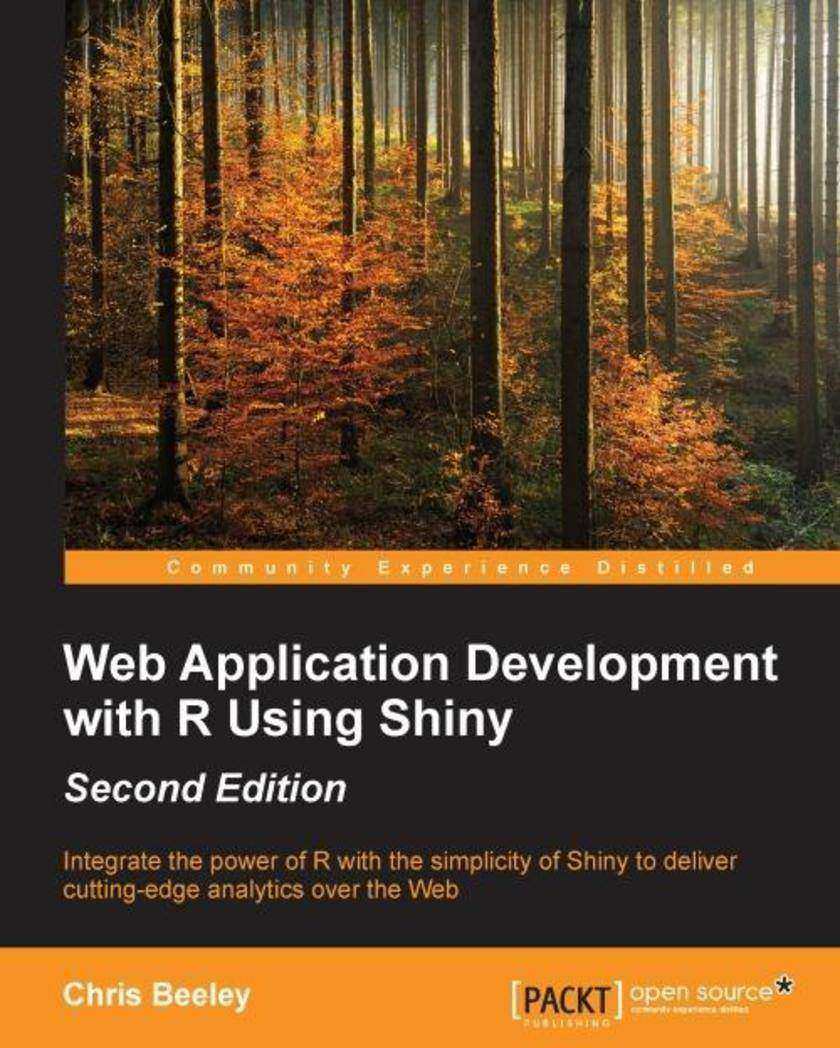
Web Application Development with R Using Shiny - Second Edition
¥71.93
Integrate the power of R with the simplicity of Shiny to deliver cutting-edge analytics over the WebAbout This BookUse Shiny's built-in functions to produce engaging user interfaces, and integrate them into your own web pagesImplement powerful user-contributed packages to access graphics from the web, make your own dashboards, use interactive maps, and moreExtend Shiny using JavaScript and jQuery with minimal coding using this handy, step-by-step guideWho This Book Is ForThis book is for anybody who wants to produce interactive data summaries over the web, whether you want to share them with a few colleagues or the whole world. No previous experience with R, Shiny, HTML, or CSS is required to begin using this book, although you should possess some previous experience with programming in a different language.What You Will LearnBuild interactive applications using Shiny's built-in widgetsUse the built-in layout functions in Shiny to produce user-friendly applicationsIntegrate Shiny applications with web pages and customize them using HTML and CSSHarness the power of JavaScript and jQuery to customize your applicationsEngage your users and build better analytics using interactive plotsDebug your applications using Shiny's built-in functionsDeliver simple and powerful analytics across your organization using Shiny dashboardsShare your applications with colleagues or over the Internet using cloud services or your own serverIn DetailR is a highly flexible and powerful tool for analyzing and visualizing data. Most of the applications built using various libraries with R are desktop-based. But what if you want to go on the webHere comes Shiny to your rescue!Shiny allows you to create interactive web applications using the excellent analytical and graphical capabilities of R. This book will guide you through basic data management and analysis with R through your first Shiny application, and then show you how to integrate Shiny applications with your own web pages. Finally, you will learn how to finely control the inputs and outputs of your application, along with using other packages to build state-of-the-art applications, including dashboards.Style and approachLearn by doing! Each chapter includes code and examples to use and adapt for your own applications. As the chapters progress, the code and examples are built upon until you have all the materials required to build a large, complex, real-world analytics application.
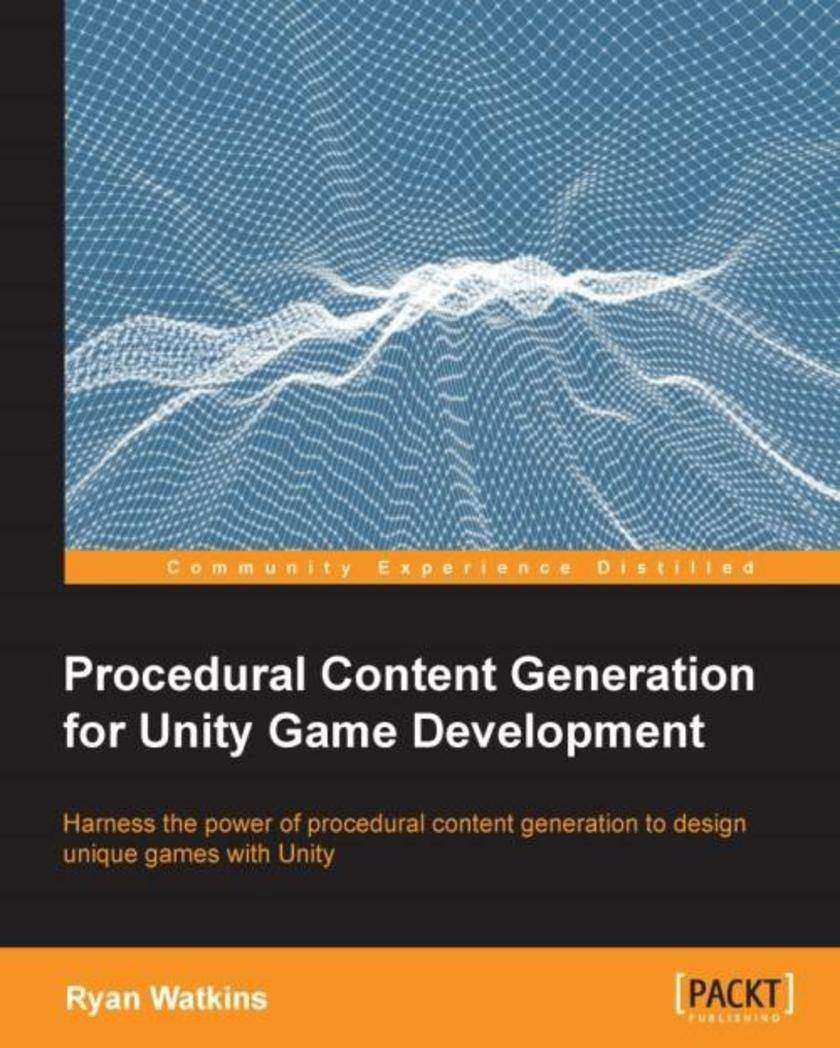
Procedural Content Generation for Unity Game Development
¥90.46
Harness the power of procedural content generation to design unique games with UnityAbout This BookLearn the basics of PCG developmentDevelop a 2D game from start to finishExplore all the different ways PCG can be applied in gamesWho This Book Is ForThis book is for Unity game developers, especially those who work on indie games. You should be familiar with Unity and C# *ing but you'll be able to jump in and start learning PCG straightaway.What You Will LearnUnderstand the theory of Procedural Content GenerationLearn the uses of Pseudo Random NumbersCreate reusable algorithm designs for PCGEvaluate the data structures for PCGDevelop smaller games with larger amounts of contentGenerate content instead of spending time designing every minute detailLearn when and how to add PCG to your gameLearn the fundamental techniques of PCGIn DetailProcedural Content Generation is a process by which game content is developed using computer algorithms, rather than through the manual efforts of game developers. This book teaches readers how to develop algorithms for procedural generation that they can use in their own games. These concepts are put into practice using C# and Unity is used as the game development engine.This book provides the fundamentals of learning and continued learning using PCG. You'll discover the theory of PCG and the mighty Pseudo Random Number Generator. Random numbers such as die rolls and card drafting provide the chance factor that makes games fun and supplies spontaneity. This book also takes you through the full development of a 2D game.Starting with level generation, you'll learn how PCG can make the game environment for you. You'll move into item generation and learn the different techniques to procedurally create game items. Thereafter, you'll be guided through the more abstract PCG areas such as scaling difficulty to the player and even generating music! The book helps you set up systems within your games where algorithms create computationally generated levels, art assets, quests, stories, characters, and weapons; these can substantially reduce the burden of manually creating every aspect of the game.Finally, you'll get to try out your new PCG skills on 3D terrain generation.Style and approachAn easy-to-follow, project-based guide that will let you build a complete game by the end of the book using PCG.
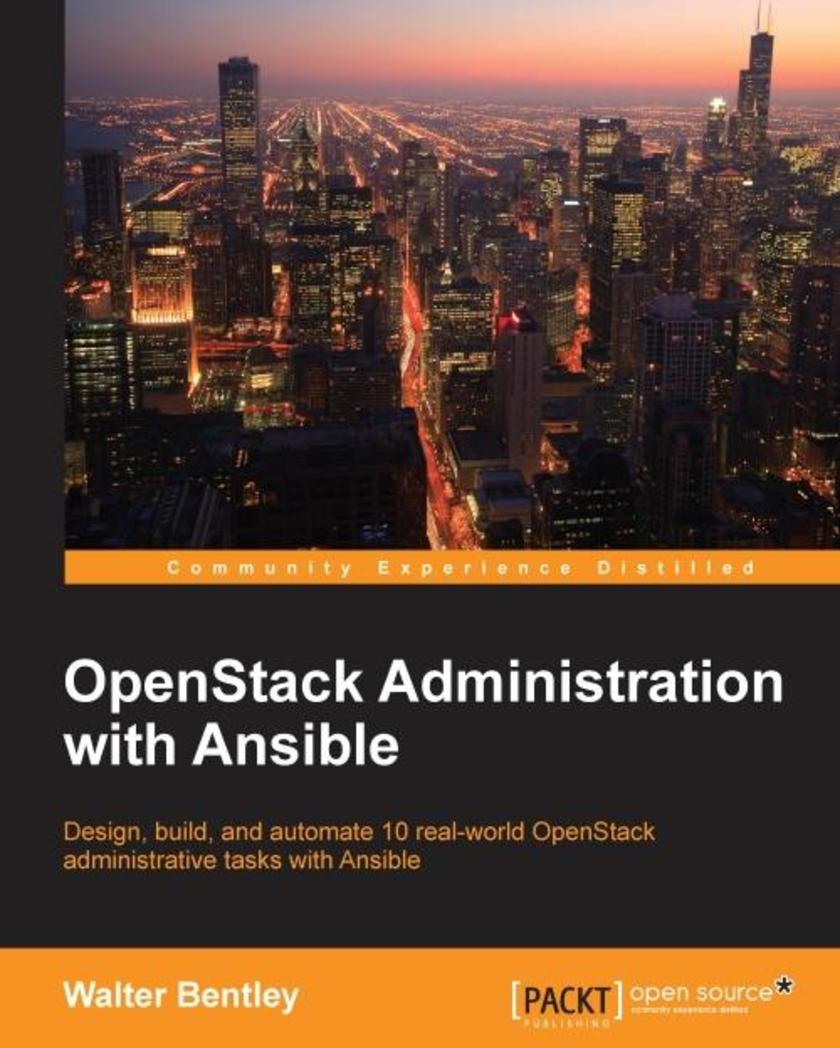
OpenStack Administration with Ansible
¥63.21
Design, build, and automate 10 real-world OpenStack administrative tasks with AnsibleAbout This BookAutomate real-world OpenStack cloud operator administrative tasksConstruct a collection of automation code to save time on managing your OpenStack cloudUse this step-by-step tutorial to automate such tasks with AnsibleWho This Book Is ForIf you are an OpenStack-based cloud operator and/or infrastructure administrator and are interested in automating administrative functions, then this book is exactly what you are looking for. Having a functioning OpenStack environment is helpful, but most certainly not necessary.What You Will LearnEfficiently execute OpenStack administrative tasksFamiliarize yourself with how Ansible works and assess the defined best practicesCreate Ansible playbooks and rolesAutomate tasks to customize your OpenStack cloudReview OpenStack automation considerations when automating administrative tasksExamine and automate advanced OpenStack tasks and designated use casesGet a high-level overview of OpenStack and the current production-ready projectsDeep dive into OpenStack CLI tools and find out how to use themIn DetailMost organizations are seeking methods to improve business agility because they have realized just having a cloud is not enough. Being able to improve application deployments, reduce infrastructure downtime, and eliminate daily manual tasks can only be accomplished through some sort of automation.Packed with real-world OpenStack administrative tasks, this book will walk you through working examples and explain how these tasks can be automated using one of the most popular open source automation tools—Ansible.We will start with a brief overview of OpenStack and Ansible and highlight some best practices. Each chapter will provide an introduction to handling various Cloud Operator administration tasks such as creating multiple users/tenants, setting up Multi-Tenant Isolation, customizing your clouds quotas, taking instance snapshots, evacuating compute hosts for maintenance, and running cloud health checks, and a step-by-step tutorial on how to automate these tasks with Ansible.Style and approachThis easy-to-follow reference guide is packed with examples of real-world OpenStack administration tasks; each task is explained in detail and then subsequently turned into automation code.
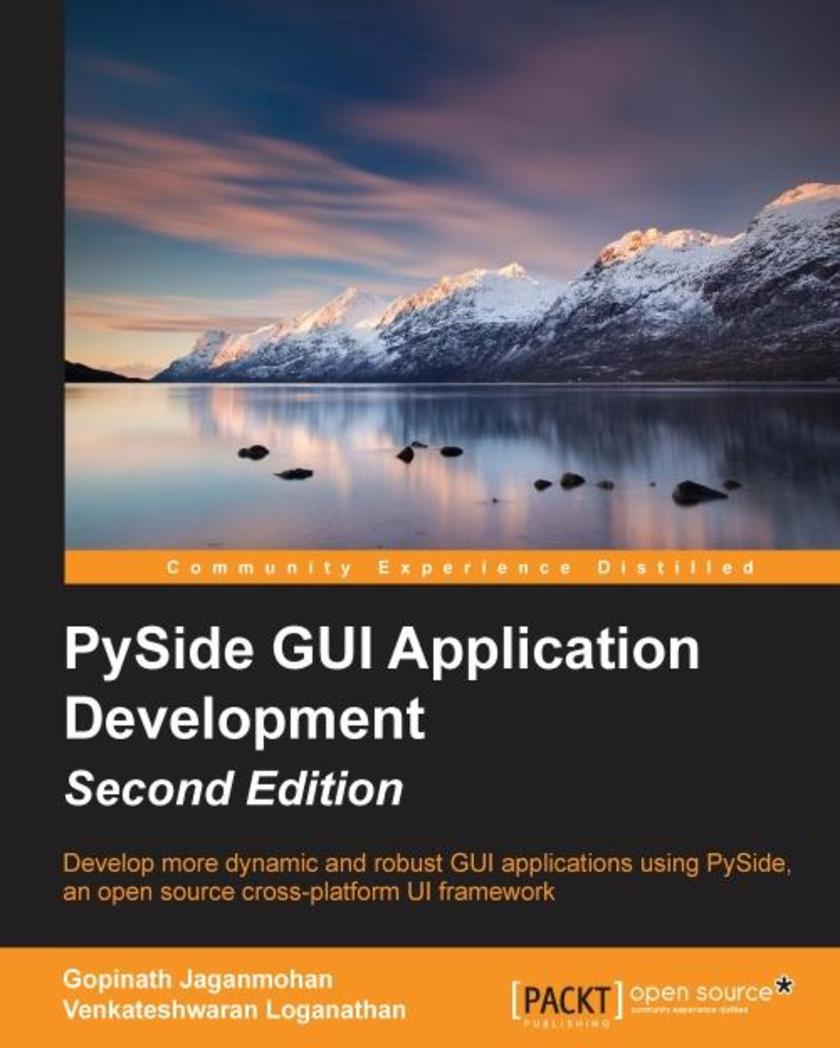
PySide GUI Application Development - Second Edition
¥54.49
Develop more dynamic and robust GUI applications using PySide, an open source cross-platform UI frameworkAbout This BookDesigned for beginners to help you get started with GUI application developmentDevelop your own applications by creating customized widgets and dialogsWritten in a simple and elegant structure so you easily understand how to program various GUI componentsWho This Book Is ForThis book is written for Python programmers who want to learn about GUI programming. It is also suitable for those who are new to Python but are familiar with object-oriented programming.What You Will LearnProgram GUI applications in an easy and efficient wayDownload and install PySide, a cross-platform GUI development toolkit for PythonCreate menus, toolbars, status bars, and child windowsDevelop a text editor application on your ownConnect your GUI to a database and manage itExecute SQL queries by handling databasesIn DetailElegantly-built GUI applications are always a massive hit among users. PySide is an open source software project that provides Python bindings for the Qt cross-platform UI framework. Combining the power of Qt and Python, PySide provides easy access to the Qt framework for Python developers and also acts as an excellent rapid application development platform.This book will take you through everything you need to know to develop UI applications. You will learn about installing and building PySide in various major operating systems as well as the basics of GUI programming. The book will then move on to discuss event management, signals and slots, and the widgets and dialogs available with PySide. Database interaction and manipulation is also covered.By the end of this book, you will be able to program GUI applications efficiently and master how to develop your own applications and how to run them across platforms.Style and approachThis is an accessible and practical guide to developing GUIs for Python applications.
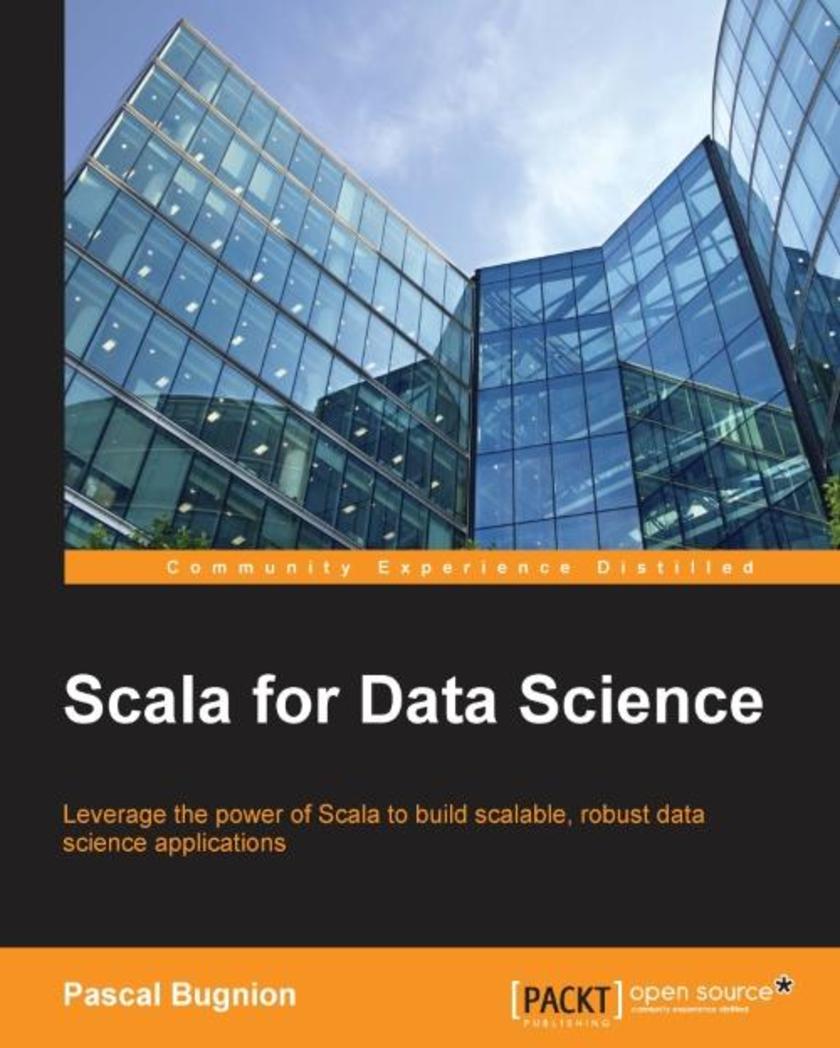
Scala for Data Science
¥99.18
Leverage the power of Scala with different tools to build scalable, robust data science applicationsAbout This BookA complete guide for scalable data science solutions, from data ingestion to data visualizationDeploy horizontally scalable data processing pipelines and take advantage of web frameworks to build engaging visualizationsBuild functional, type-safe routines to interact with relational and NoSQL databases with the help of tutorials and examples providedWho This Book Is ForIf you are a Scala developer or data scientist, or if you want to enter the field of data science, then this book will give you all the tools you need to implement data science solutions.What You Will LearnTransform and filter tabular data to extract features for machine learningImplement your own algorithms or take advantage of MLLib’s extensive suite of models to build distributed machine learning pipelinesRead, transform, and write data to both SQL and NoSQL databases in a functional mannerWrite robust routines to query web APIsRead data from web APIs such as the GitHub or Twitter APIUse Scala to interact with MongoDB, which offers high performance and helps to store large data sets with uncertain query requirementsCreate Scala web applications that couple with JavaScript libraries such as D3 to create compelling interactive visualizationsDeploy scalable parallel applications using Apache Spark, loading data from HDFS or HiveIn DetailScala is a multi-paradigm programming language (it supports both object-oriented and functional programming) and *ing language used to build applications for the JVM. Languages such as R, Python, Java, and so on are mostly used for data science. It is particularly good at analyzing large sets of data without any significant impact on performance and thus Scala is being adopted by many developers and data scientists. Data scientists might be aware that building applications that are truly scalable is hard. Scala, with its powerful functional libraries for interacting with databases and building scalable frameworks will give you the tools to construct robust data pipelines.This book will introduce you to the libraries for ingesting, storing, manipulating, processing, and visualizing data in Scala.Packed with real-world examples and interesting data sets, this book will teach you to ingest data from flat files and web APIs and store it in a SQL or NoSQL database. It will show you how to design scalable architectures to process and modelling your data, starting from simple concurrency constructs such as parallel collections and futures, through to actor systems and Apache Spark. As well as Scala’s emphasis on functional structures and immutability, you will learn how to use the right parallel construct for the job at hand, minimizing development time without compromising scalability. Finally, you will learn how to build beautiful interactive visualizations using web frameworks.This book gives tutorials on some of the most common Scala libraries for data science, allowing you to quickly get up to speed with building data science and data engineering solutions.Style and approachA tutorial with complete examples, this book will give you the tools to start building useful data engineering and data science solutions straightaway
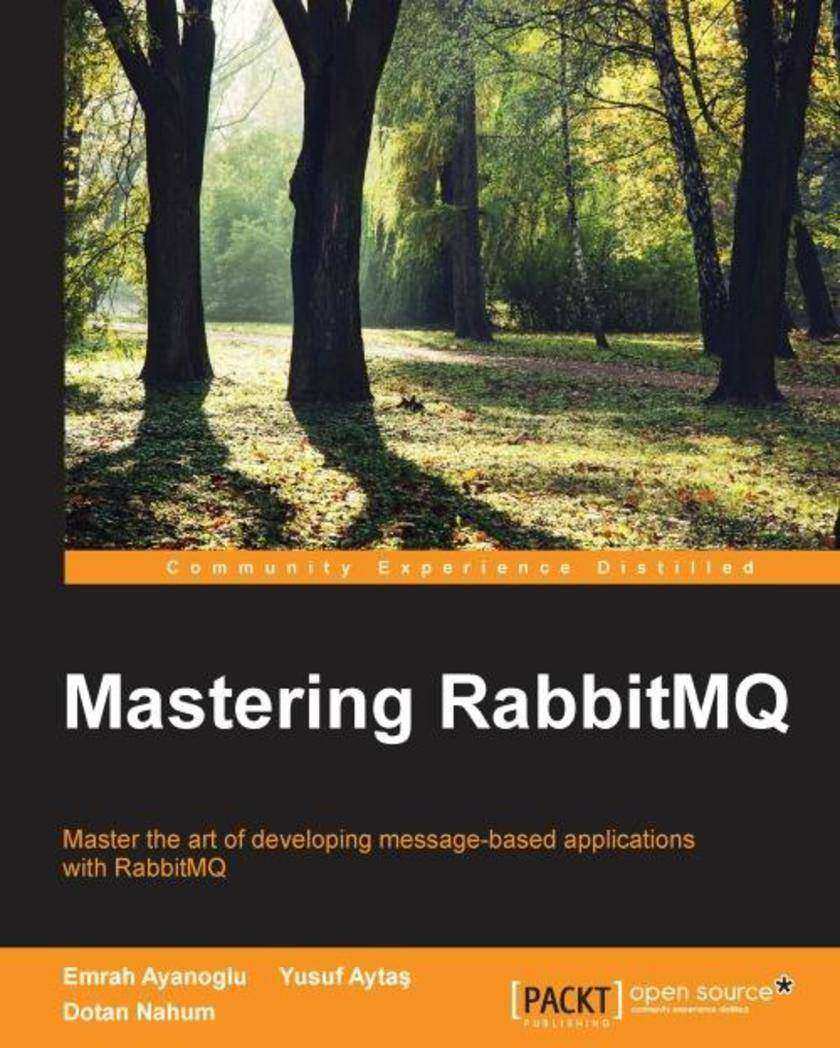
Mastering RabbitMQ
¥99.18
Master the art of developing message-based applications with RabbitMQAbout This BookLearn how to administer, manage, and extend your own message broker, RabbitMQDevelop clients to make a message bridge between your software systems using RabbitMQDiscover how to achieve proficiency with RabbitMQ with the well-defined de*ions of the topicsWho This Book Is ForIf you are an intermediate-level RabbitMQ developer, who wants to achieve professional-level expertise in the subject, this book is for you. You’ll also need to have a decent understanding of message queuing.What You Will LearnAdminister RabbitMQ using different toolsUnderstand the roots and details of messaging, message brokers, and AMQP protocolScale the RabbitMQ server using the clusters and high availability techniquesExtend RabbitMQ by developing the Erlang OTP-based applications that use the RabbitMQ APIManage the RabbitMQ server using its powerful toolsMonitor the RabbitMQ Server using different open source tools such as Nagios, Munin, and ZabbixEnsure your RabbitMQ’s security using SSL, SASL, and access controlDevelop RabbitMQ clients using Java, Python, and C# with an industry exampleIn DetailRabbitMQ is one of the most powerful Open Source message broker software, which is widely used in tech companies such as Mozilla, VMware, Google, AT&T, and so on. RabbitMQ gives you lots of fantastic and easy-to-manage functionalities to control and manage the messaging facility with lots of community support. As scalability is one of our major modern problems, messaging with RabbitMQ is the main part of the solution to this problem.This book explains and demonstrates the RabbitMQ server in a detailed way. It provides you with lots of real-world examples and advanced solutions to tackle the scalability issues.You’ll begin your journey with the installation and configuration of the RabbitMQ server, while also being given specific details pertaining to the subject. Next, you’ll study the major problems that our server faces, including scalability and high availability, and try to get the solutions for both of these issues by using the RabbitMQ mechanisms. Following on from this, you’ll get to design and develop your own plugins using the Erlang language and RabbitMQ’s internal API. This knowledge will help you to start with the management and monitoring of the messages, tools, and applications. You’ll also gain an understanding of the security and integrity of the messaging facilities that RabbitMQ provides. In the last few chapters, you will build and keep track of your clients (senders and receivers) using Java, Python, and C#.Style and approach An easy-to-follow guide, full of hands-on examples based around managing, monitoring, extending, and securing RabbitMQ and its internal tools. You will learn how to develop your own clients using Java, Python, and C#.
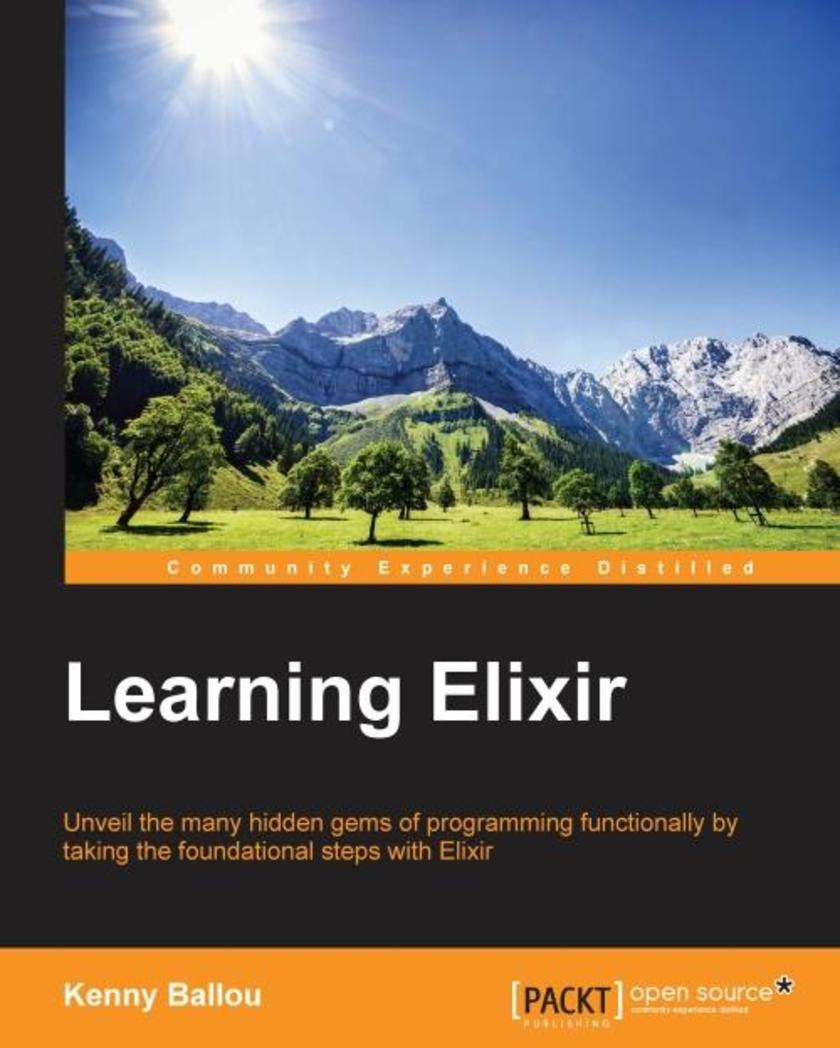
Learning Elixir
¥63.21
Unveil many hidden gems of programming functionally by taking the foundational steps with ElixirAbout This BookExplore the functional paradigms of programming with Elixir through use of helpful examplesConcise step-by-step instructions to teach you difficult technical conceptsBridge the gap between functional programming and ElixirWho This Book Is ForThis book targets developers new to Elixir, as well as Erlang, in order to make them feel comfortable in functional programming with Elixir, thus enabling them to develop more scalable and fault-tolerant applications.Although no knowledge of Elixir is assumed, some programming experience with mainstream Object-Oriented programming languages such a Ruby, Python, Java, C# would be beneficial.What You Will LearnExplore Elixir to create resilient, scalable applicationsCreate fault-tolerant applicationsBecome better acquainted with Elixir code and see how it is structured to build and develop functional programsLearn the basics of functional programmingGain an understanding of effective OTP principlesDesign program-distributed applications and systemsWrite and create branching statements in ElixirLearn to do more with less using Elixir's metaprogrammingBe familiar with the facilities Elixir provides for metaprogramming, macros, and extending the Elixir languageIn DetailElixir, based on Erlang’s virtual machine and ecosystem, makes it easier to achieve scalability, concurrency, fault tolerance, and high availability goals that are pursued by developers using any programming language or programming paradigm. Elixir is a modern programming language that utilizes the benefits offered by Erlang VM without really incorporating the complex syntaxes of Erlang.Learning to program using Elixir will teach many things that are very beneficial to programming as a craft, even if at the end of the day, the programmer isn't using Elixir. This book will teach you concepts and principles important to any complex, scalable, and resilient application. Mostly, applications are historically difficult to reason about, but using the concepts in this book, they will become easy and enjoyable. It will teach you the functional programing ropes, to enable them to create better and more scalable applications, and you will explore how Elixir can help you achieve new programming heights. You will also glean a firm understanding of basics of OTP and the available generic, provided functionality for creating resilient complex systems. Furthermore, you will learn the basics of metaprogramming: modifying and extending Elixir to suite your needs.Style and approach An exploration of functional programming and Elixir with easy to follow examples using Elixir and the functional style. All the topics, concepts, and principles covered are clearly and concisely explained with either code examples or in depth discussions, or both!
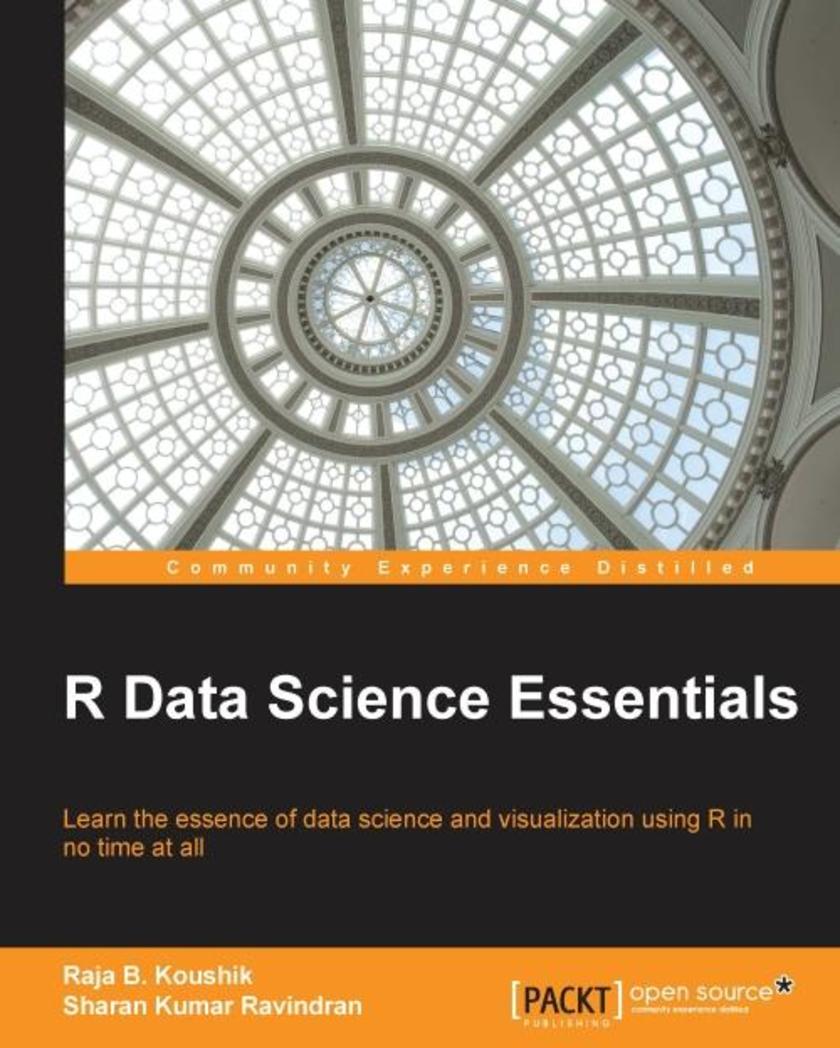
R Data Science Essentials
¥63.21
Learn the essence of data science and visualization using R in no time at allAbout This BookBecome a pro at making stunning visualizations and dashboards quickly and without hassleFor better decision making in business, apply the R programming language with the help of useful statistical techniques.From seasoned authors comes a book that offers you a plethora of fast-paced techniques to detect and analyze data patternsWho This Book Is ForIf you are an aspiring data scientist or analyst who has a basic understanding of data science and has basic hands-on experience in R or any other analytics tool, then R Data Science Essentials is the book for you.What You Will LearnPerform data preprocessing and basic operations on dataImplement visual and non-visual implementation data exploration techniquesMine patterns from data using affinity and sequential analysisUse different clustering algorithms and visualize themImplement logistic and linear regression and find out how to evaluate and improve the performance of an algorithmExtract patterns through visualization and build a forecasting algorithmBuild a recommendation engine using different collaborative filtering algorithmsMake a stunning visualization and dashboard using ggplot and R shinyIn DetailWith organizations increasingly embedding data science across their enterprise and with management becoming more data-driven it is an urgent requirement for analysts and managers to understand the key concept of data science. The data science concepts discussed in this book will help you make key decisions and solve the complex problems you will inevitably face in this new world.R Data Science Essentials will introduce you to various important concepts in the field of data science using R. We start by reading data from multiple sources, then move on to processing the data, extracting hidden patterns, building predictive and forecasting models, building a recommendation engine, and communicating to the user through stunning visualizations and dashboards.By the end of this book, you will have an understanding of some very important techniques in data science, be able to implement them using R, understand and interpret the outcomes, and know how they helps businesses make a decision.Style and approachThis easy-to-follow guide contains hands-on examples of the concepts of data science using R.
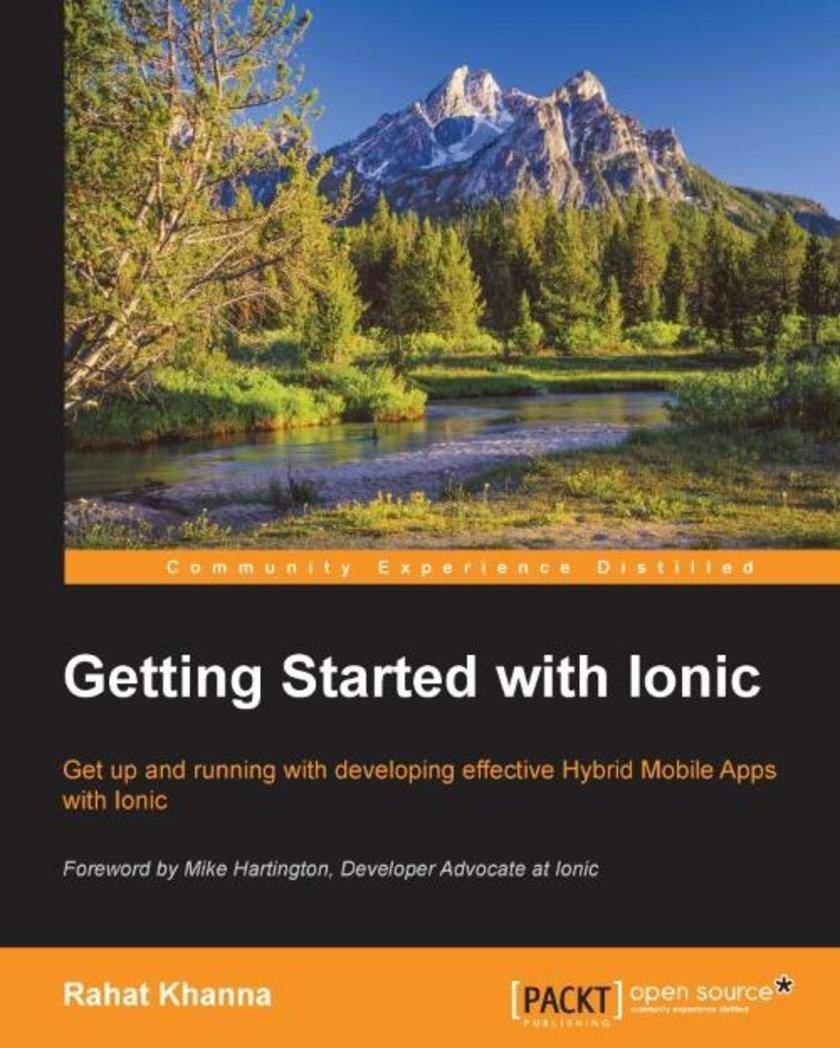
Getting Started with Ionic
¥54.49
Get up and running with developing effective Hybrid Mobile Apps with IonicAbout This BookDevelop engaging mobile experiences with a native-looking UI in Ionic and AngularJSBuild mobile applications with a native UI and interactions with device APIs using popular web technologies such as HTML, CSS, and JavaScriptCreate an e-commerce mobile app using tutorials and code samplesWho This Book Is ForThis book is ideal for any web developer who wants to enter into the world of mobile app development but has no clue where to start. Ionic is an ideal starting point and provides a smooth learning curve to help you build hybrid apps using web technologies and to develop native apps for iOS and Android, you do not need to know multiple languages. This book will also be useful for Hybrid App developers who have not found the perfect framework to ensure users get a rich experience from your apps.What You Will LearnGet to know about Hybrid Apps and AngularJSSet up a development environment to build Hybrid AppsNavigate around the components and routing in IonicUse different Ionic directives for a mobile-specific experienceIntegrate an Ionic App with backend web servicesWork with plugins to include native functionality in your hybrid appsTest your apps on real devicesBuild an e-commerce app for iOS and Android from scratchIn DetailHybrid Apps are a promising choice in mobile app development to achieve cost effectiveness and rapid development. However, they were not preferred over native apps until few years back due to a poor performance and bad user experience, but everything has changed with the release of Ionic. It has evolved as the most popular choice for Hybrid Mobile App development as it tends to match the native experience and provides robust components/tools to build apps.Getting Started with Ionic equips any web developer with the basic knowledge needed to use modern web technologies to build amazing hybrid mobile apps using Ionic.This fast-paced, practical book explains all the important concepts of AngularJS and Cordova Framework required to develop apps, then gives you a brief introduction to hybrid mobile applications. It will guide you through setting up the environment to develop mobile apps, and through the multiple options and features available in Ionic so you can use them in your mobile apps. Features such as the Side Menu, Tabs, Touch Interactions, and native features such as Bar Code, Camera, and Geolocations are all covered.. Finally, we’ll show you how to use Cordova plugins and publish your apps.Style and approachGetting started with Ionic is a compact, easy-to-follow guide to developing hybrid mobile apps using Ionic with real world examples of building an e-commerce app.




 购物车
购物车 个人中心
个人中心



